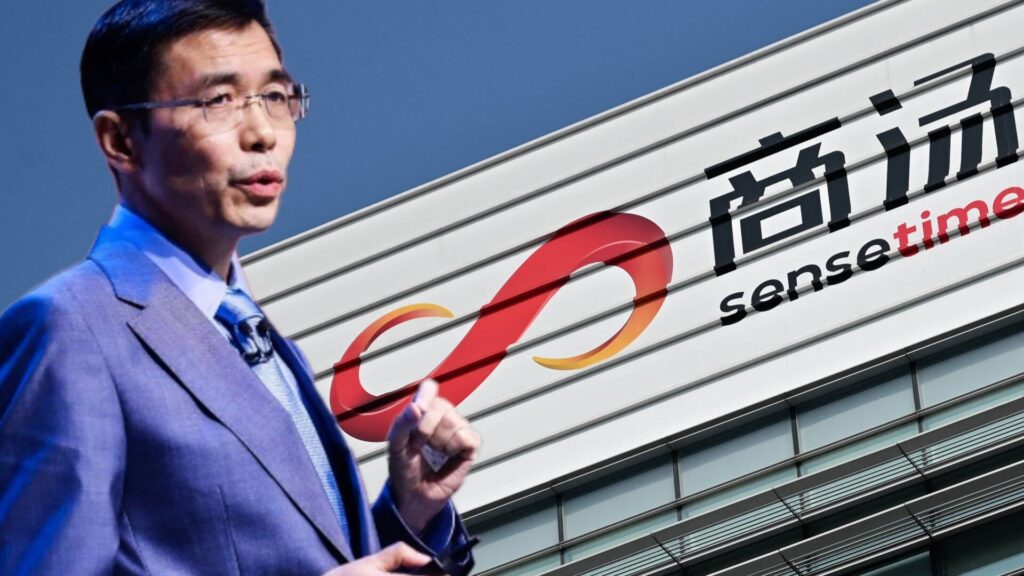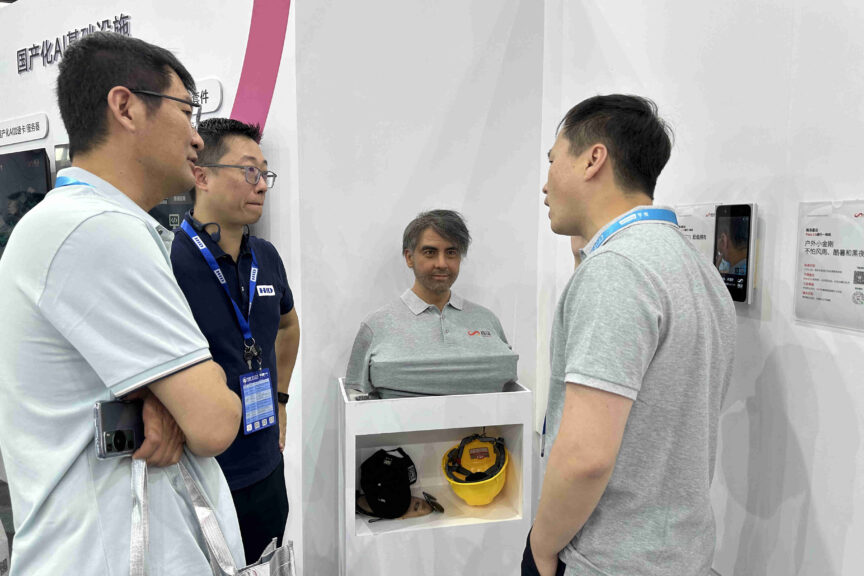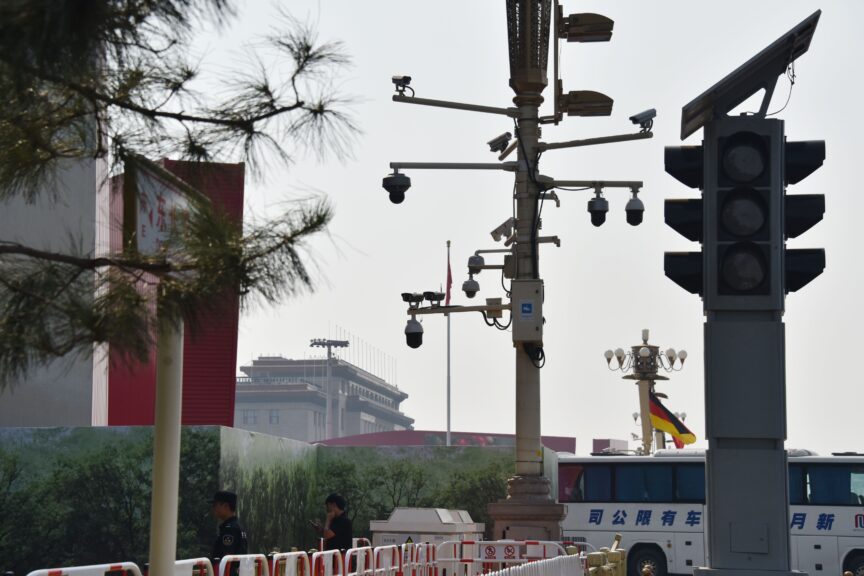On December 16, 2023, the founder of the Chinese A.I. company SenseTime suddenly died. Called “the father of Chinese A.I.,” Tang Xiao’ou was a tech superstar and His death at age 55 was shocking. Three versions of the cause of his death were circulating.

The first was his company’s official announcement, stating that Tang died from an incurable illness. The second version came from Chinese media reports, saying that Tang died peacefully in his sleep. The most disturbing was a rumor claiming that Tang jumped from a tall building. Which of the three was the closest to the truth? And what stories lie behind his quick rise and dramatic fall?
Tang Xiao’ou came to the University of Rochester in New York for graduate study after graduating from the University of Science and Technology of China. One year later, he was admitted to the Massachusetts Institute of Technology (MIT). After obtaining his Ph.D. from MIT, he began teaching at the Chinese University of Hong Kong (CUHK). In 2001, he founded the Multimedia Lab at the school.
From 2005 to 2007, he worked at Microsoft Research Asia as the head of its computer vision group. Tang participated in the CCP’s Thousand Talents Plan, a program launched by Beijing to recruit accomplished scholars and researchers working overseas with the goal of bringing their expertise and innovation back to China.
A Tech Genius
Tang’s research focus was computer vision, a hot topic in A.I. In 2014, Tang Xiao’ou announced that the facial recognition algorithm developed by his team in Hong Kong had an accuracy rate exceeding that of the human eye. The LFW and FDDB databases are global facial recognition databases, with LFW containing over 10,000 photos of global celebrities. The accuracy of facial recognition on LFW photos could reach 97.53%. Tang’s facial recognition algorithm achieved an accuracy rate of 99.55%, surpassing the human eyes. With this accomplishment, he established SenseTime and undertook a secret mission, which propelled his rise and dictated his fall.

In October 2016, South Korean Go master Lee Sedol played against Google’s artificial intelligence, AlphaGo. After four hours, A.I. announced its victory over Lee. This was a turning moment for the A.I. industry because a Go match was far more complex than chess, and people had not expected A.I. to win. Suddenly, A.I. became major headline news and SenseTime, Tang’s company, became a sought-after property. Investors were bullish on Tang’s facial recognition technology.
A Chinese Unicorn
He solicited funding with the goal of taking the company public. By 2018, he completed Series D financing, raising $2.6 billion globally, with much of it coming from investment giants in the United States and Japan, such as Qualcomm, Sequoia Capital, and SoftBank Group. The government of the United Arab Emirates also invested in him. Chinese companies like Tencent and Alibaba seized the opportunity, too. SenseTime’s valuation reached $6 billion, making it a highly valuable unicorn company in China.
The father of Chinese A.I.
During a speech at MIT in 2018, Tang jokingly said that in the future, when talking about A.I., people would think of SenseTime first, not Google. In 2019, SenseTime actively prepared for its IPO. However, its IPO filing shocked investors. People suddenly discovered that SenseTime’s core business was the Chinese communist Party’s surveillance system, SkyNet. This was the secret mission Tang embarked on. SkyNet is the largest video surveillance system in the world. By 2020, more than 627 million surveillance cameras had been installed in over 500 major cities across China.
Special Mission Revealed
After SenseTime’s connection to SkyNet became public, the New York Times published an article. It stated that in the western Xinjiang region, where many Uyghurs live, there is a massive surveillance system that not only includes video surveillance but also uses DNA to track Uyghurs, and SenseTime is one of the providers of this system. The article made Tang’s international investors nervous. Then, other bigger troubles followed.
First, the U.S. government began taking a more severe stance on China’s Thousand Talents Program, which Tang participated in. Secondly, before the last round of financing for SenseTime’s IPO in 2021, Washington labeled SenseTime as a Chinese military enterprise, putting it on the investment blacklist and prohibiting U.S. companies from selling chips to it. With the aura of “the father of Chinese A.I.”, Tang shone brightly in China with Chinese believing his company would one day replace Google. Chinese capital thus filled the vacancy left by weary foreign investors.
Problems after the IPO
At the end of 2021, SenseTime went with its IPO in Hong Kong. Its price rose from HK$3.85 to HK$9 per share, with a market value that soared to HK$320 billion. Although everything looked good, Tang Xiao-ou’s anxiety was only getting worse deep inside. SenseTime is not a hardcore A.I. tech company. Its technology touches only a part of computer vision that relies on American chips.
A genius without a brain
Light passes through the pupil, and enters the retina at the back of the eye, where cone and rod cells on the retina translate the image into brain waves. These waves are then transmitted through the optic nerve to the visual center of the brain, where the image is reflected. At this point, one may think he sees something. But it’s not his eyes that see. It’s his brain that sees the image.
During the imaging process, the eyes play the role of a front-end camera but the vision is processed in the brain. A.I. vision mimics the same human process. After the camera captures the image, the brain must analyze it in order to recognize it. The A.I. brain of computer vision is called a graphic processing unit or GPU.

All the data captured by over 600 million cameras in China must enter the GPU for processing to become useful information. China doesn’t produce GPUs. SenseTime’s facial recognition algorithm is not the brain. It’s only the equivalent of the retina behind the eye. A GPU is needed to form an A.I. vision system. There are six companies in the world that design and manufacture GPUs, with four being in the United States (Intel, AMD, Qualcomm, and NVIDIA) and two in the U.K. (ARM Holdings and Imagination Technologies).
SenseTime uses NVIDIA’s GPU chips. It established Asia’s largest data center, the Shanghai Lingang AI Data Center. However, due to the restrictions imposed by the U.S. government, its GPUs won’t be upgraded, and if they fail, they can’t be replaced.
Financial Decline
As the Chinese regime’s financial pressure increased year by year, the money it invested in SkyNet decreased. SenseTime was losing its major source of revenue. But the company’s expenses were high. It employed over 5,000 people, 70% of whom were in research. The salaries of SenseTime’s senior management were in the eight digits of the Chinese yuan.
What’s more tragic is that besides the SkyNet system, SenseTime had no other marketable products. The company had no alternative ways to make money and reached a financial dead end. Six months after its IPO, SenseTime’s stock price plunged by half after a lock-in period for pre-IPO investors ended. Smart investors had already sensed the problem and cashed out early.
The demise
In November 2023, SenseTime’s shares plummeted again after a short seller, Grizzly Research, accused the company of artificially inflating its revenues by financing companies that, in turn, fed business to SenseTime. By early December 2023, SenseTime’s stock price had plummeted to about HK$1.3, only one-third of its IPO price. Then, on December 15th news came that its 55-year-old founder, Tang Xiao-ou, had died. People speculated on the cause of his death.
Watch the full video here:






